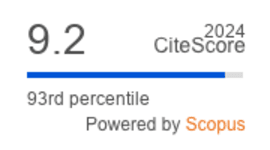Decoding the mystery of how bacteria “talk”: Among Gram-negative microorganisms
DOI:
https://doi.org/10.36877/pmmb.a0000038Abstract
To date, microbial diversity is still the least well understood component of biodiversity. Bacteria are the most abundant microorganisms where most species are often found ubiquitous. Microorganisms such as bacteria are diverse in their impacts such as in spreading of infectious diseases or play a valuable role in biotechnological purposes. Hence, it is interesting to gain a look upon the ways where bacteria regulate their daily processes in the environment. Bacteria communicate with each other through extracellular signalling molecules or also known as autoinducers (AIs) that are produced, detected and show response. This process is termed as quorum sensing (QS) which indicates that bacteria do communicate in order to perform various physiological activities. QS enable bacteria to have the advantages that are unattainable as individual bacterial cell. This review emphases on the characteristics of quorum sensing (QS) and its benefits in understanding different kind of bacterial QS-dependent activities. This fundamental insight from QS system will enable us to manage bacterial activities by targeting their communication circuit.
Downloads
Published
How to Cite
Issue
Section
License
Author(s) shall retain the copyright of their work and grant the Journal/Publisher right for the first publication with the work simultaneously licensed under:
Creative Commons Attribution-NonCommercial 4.0 International (CC BY-NC 4.0). This license allows for the copying, distribution and transmission of the work, provided the correct attribution of the original creator is stated. Adaptation and remixing are also permitted.

This broad license intends to facilitate free access to, as well as the unrestricted reuse of, original works of all types for non-commercial purposes.
The author(s) permits HH Publisher to publish this article that has not been submitted elsewhere.



.png)

.jpg)
